Neuroestrogen signaling in the songbird auditory cortex propagates into a sensorimotor network via an 'interface' nucleus
- PMID: 25453773
- PMCID: PMC4268063
- DOI: 10.1016/j.neuroscience.2014.10.023
Neuroestrogen signaling in the songbird auditory cortex propagates into a sensorimotor network via an 'interface' nucleus
Abstract
Neuromodulators rapidly alter activity of neural circuits and can therefore shape higher order functions, such as sensorimotor integration. Increasing evidence suggests that brain-derived estrogens, such as 17-β-estradiol, can act rapidly to modulate sensory processing. However, less is known about how rapid estrogen signaling can impact downstream circuits. Past studies have demonstrated that estradiol levels increase within the songbird auditory cortex (the caudomedial nidopallium, NCM) during social interactions. Local estradiol signaling enhances the auditory-evoked firing rate of neurons in NCM to a variety of stimuli, while also enhancing the selectivity of auditory-evoked responses of neurons in a downstream sensorimotor brain region, HVC (proper name). Since these two brain regions are not directly connected, we employed dual extracellular recordings in HVC and the upstream nucleus interfacialis of the nidopallium (NIf) during manipulations of estradiol within NCM to better understand the pathway by which estradiol signaling propagates to downstream circuits. NIf has direct input into HVC, passing auditory information into the vocal motor output pathway, and is a possible source of the neural selectivity within HVC. Here, during acute estradiol administration in NCM, NIf neurons showed increases in baseline firing rates and auditory-evoked firing rates to all stimuli. Furthermore, when estradiol synthesis was blocked in NCM, we observed simultaneous decreases in the selectivity of NIf and HVC neurons. These effects were not due to direct estradiol actions because NIf has little to no capability for local estrogen synthesis or estrogen receptors, and these effects were specific to NIf because other neurons immediately surrounding NIf did not show these changes. Our results demonstrate that transsynaptic, rapid fluctuations in neuroestrogens are transmitted into NIf and subsequently HVC, both regions important for sensorimotor integration. Overall, these findings support the hypothesis that acute neurosteroid actions can propagate within and between neural circuits to modulate their functional connectivity.
Keywords: HVC; aromatase; estrogen; nidopallium; nucleus interfacialis; songbird.
Copyright © 2014 IBRO. Published by Elsevier Ltd. All rights reserved.
Figures



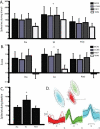
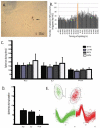
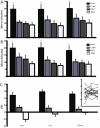
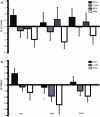
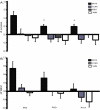

Similar articles
-
Sensory Coding and Sensitivity to Local Estrogens Shift during Critical Period Milestones in the Auditory Cortex of Male Songbirds.eNeuro. 2017 Dec 12;4(6):ENEURO.0317-17.2017. doi: 10.1523/ENEURO.0317-17.2017. eCollection 2017 Nov-Dec. eNeuro. 2017. PMID: 29255797 Free PMC article.
-
Changing neuroestrogens within the auditory forebrain rapidly transform stimulus selectivity in a downstream sensorimotor nucleus.J Neurosci. 2012 Jun 13;32(24):8231-41. doi: 10.1523/JNEUROSCI.1114-12.2012. J Neurosci. 2012. PMID: 22699904 Free PMC article.
-
Acute neuroestrogen blockade attenuates song-induced immediate early gene expression in auditory regions of male and female zebra finches.J Comp Physiol A Neuroethol Sens Neural Behav Physiol. 2020 Jan;206(1):15-31. doi: 10.1007/s00359-019-01382-w. Epub 2019 Nov 28. J Comp Physiol A Neuroethol Sens Neural Behav Physiol. 2020. PMID: 31781892 Free PMC article.
-
At the interface of the auditory and vocal motor systems: NIf and its role in vocal processing, production and learning.J Physiol Paris. 2013 Jun;107(3):178-92. doi: 10.1016/j.jphysparis.2013.04.001. Epub 2013 Apr 17. J Physiol Paris. 2013. PMID: 23603062 Free PMC article. Review.
-
Auditory signal processing in communication: perception and performance of vocal sounds.Hear Res. 2013 Nov;305:144-55. doi: 10.1016/j.heares.2013.06.007. Epub 2013 Jul 1. Hear Res. 2013. PMID: 23827717 Free PMC article. Review.
Cited by
-
Unilateral vocal nerve resection alters neurogenesis in the avian song system in a region-specific manner.PLoS One. 2021 Aug 31;16(8):e0256709. doi: 10.1371/journal.pone.0256709. eCollection 2021. PLoS One. 2021. PMID: 34464400 Free PMC article.
-
Neuroestrogens rapidly shape auditory circuits to support communication learning and perception: Evidence from songbirds.Horm Behav. 2018 Aug;104:77-87. doi: 10.1016/j.yhbeh.2018.03.007. Epub 2018 Mar 30. Horm Behav. 2018. PMID: 29555375 Free PMC article. Review.
-
Steroid Transport, Local Synthesis, and Signaling within the Brain: Roles in Neurogenesis, Neuroprotection, and Sexual Behaviors.Front Neurosci. 2018 Feb 20;12:84. doi: 10.3389/fnins.2018.00084. eCollection 2018. Front Neurosci. 2018. PMID: 29515356 Free PMC article. Review.
-
Steroids and the brain: 50years of research, conceptual shifts and the ascent of non-classical and membrane-initiated actions.Horm Behav. 2018 Mar;99:1-8. doi: 10.1016/j.yhbeh.2018.01.002. Epub 2018 Jan 12. Horm Behav. 2018. PMID: 29305886 Free PMC article. Review.
-
Sensory Coding and Sensitivity to Local Estrogens Shift during Critical Period Milestones in the Auditory Cortex of Male Songbirds.eNeuro. 2017 Dec 12;4(6):ENEURO.0317-17.2017. doi: 10.1523/ENEURO.0317-17.2017. eCollection 2017 Nov-Dec. eNeuro. 2017. PMID: 29255797 Free PMC article.
References
-
- Akutagawa E, Konishi M. New brain pathways found in the vocal control system of a songbird. J Comp Neurol. 2010;518:3086–3100. - PubMed
-
- Aston-Jones G, Cohen JD. Adaptive gain and the role of the locus coeruleus-norepinephrine system in optimal performance. J Comp Neurol. 2005;493:99–110. - PubMed
-
- Azcoitia I, Yague JG, Garcia-Segura LM. Estradiol synthesis within the human brain. Neuroscience. 2011;191:139–147. - PubMed
-
- Balthazart J, Ball GF. Is brain estradiol a hormone or a neurotransmitter? Trends Neurosci. 2006;29:241–249. - PubMed
-
- Bargmann CI. Beyond the connectome: how neuromodulators shape neural circuits. Bioessays. 2012;34:458–465. - PubMed
Publication types
MeSH terms
Substances
Grants and funding
LinkOut - more resources
Full Text Sources
Other Literature Sources
Miscellaneous

